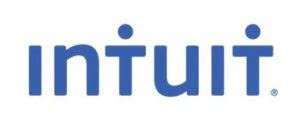
It’s possible that other problems are creeping into your company’s decision-making meetings. Maybe your senior leaders are wary https://www.bookstime.com/ of giving up control. Maybe there’s a lack of trust and the decision-makers are afraid others won’t make the “right” choices.

Three Key Principles To Guide Ethical Decision-Making In The Digital Era

Rather, good decision-making practices tend to yield decisions that are both high quality and fast. Therefore, leaders need more ethical leadership skills than those from earlier times. You must now think strategically and holistically about your business. And you need to understand the role of technology as the driving force for change. By making decisions with the three principles of transparency, responsibility and empathy, in mind, you’ll do better not only for your company, team and profitability, but you’ll also do good for the public — and that matters. Further analyses reveal the importance of making decisions that are both high quality and fast, a combination that is much more common at the winning organizations.

available evidence
Writing down and reviewing facts ensures everyone involved in the decision understands the options in the same way. It’s shocking how often people don’t realize they’re talking about completely different things or looking at entirely different facts, and this helps avoid those kinds of misunderstandings. According to McKinsey research, effective solutions center around categorizing decision types and organizing different processes to support each type. Further, each decision category should be assigned its own practice—stimulating debate, for example, or empowering employees—to yield improvements in effectiveness. Business leaders today have access to more sophisticated data than ever before. But it hasn’t necessarily made decision making any easier.
Evidence-based practice for effective decision-making
Further, a majority say much of the time they devote to decision making is used ineffectively. The digital revolution impacted all aspects of people’s lives, including leadership. As a result, how leaders communicate with their teams and the public is more transparent and accessible than ever. With this shift, there’s decision making framework a need for mindful, ethical decision-making recognizing the impact of digital decisions on larger populations. Moreover, it’s essential to grow your business and remain relevant. Leaders are growing increasingly frustrated with broken decision-making processes, slow deliberations, and uneven decision-making outcomes.
- Transparency is a core leadership principle that helps leaders make clear and consistent decisions.
- Write down the principles by which you lead your life by and by which your organization lives.
- Regardless of which challenges exist in your organization, each of us can relate to that feeling of defeat when a meeting is derailed by a decision-making roadblock.
- We leave this section intentionally generic so that the people making the decision can choose the facts that best support the decision at hand.
- For one thing, organizational dynamics—such as unclear roles, overreliance on consensus, and death by committee—can get in the way of straightforward decision making.
Evidence-based practice is a useful concept for understanding whether practices in HR lead to the desired outcomes, and whether these practices are being used to the best effect. Developing this sort of capability is a long journey but one that people professionals should aspire to. As the professional body for HR and people development, the CIPD takes an evidence-based view on the future of work – and, importantly, what this means for our profession. By doing this, we can help prepare professionals and employers for what’s coming, while also equipping them to succeed and shape a changing world of work.
How to make smart decisions quickly in uncertain times
Learn more about our People & Organizational Performance Practice

